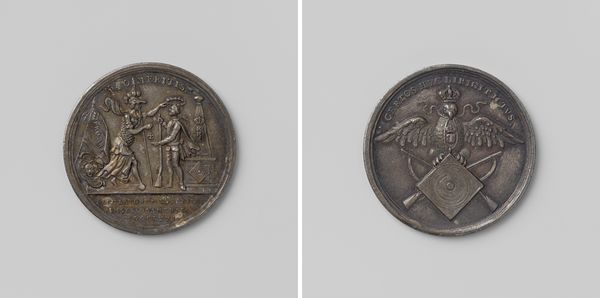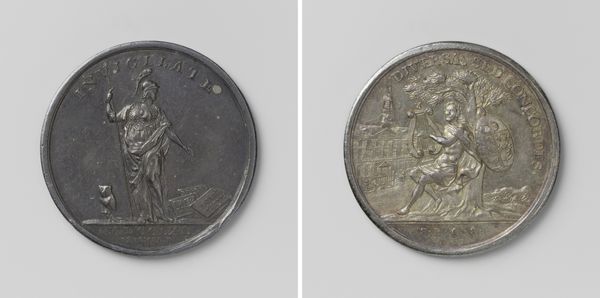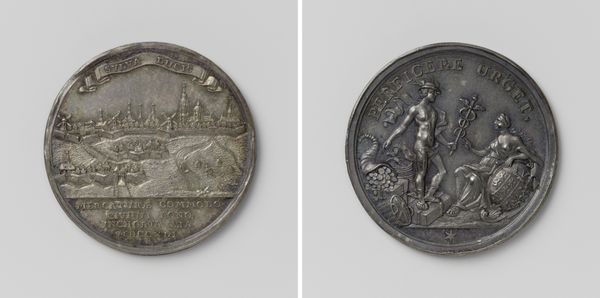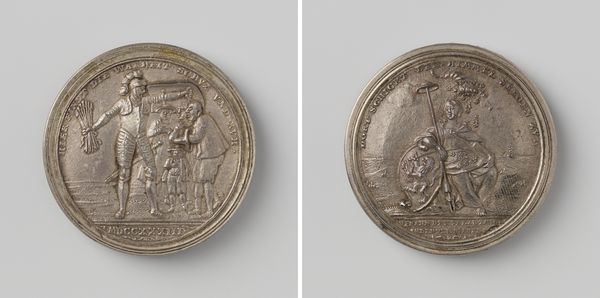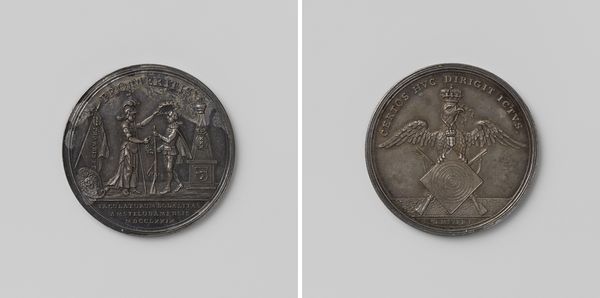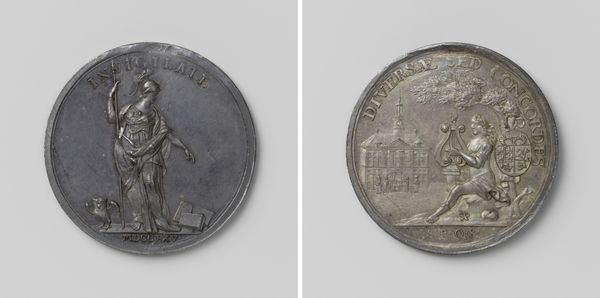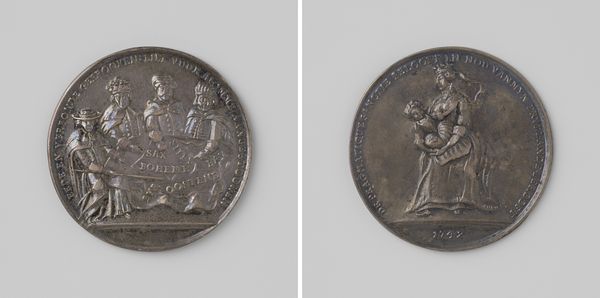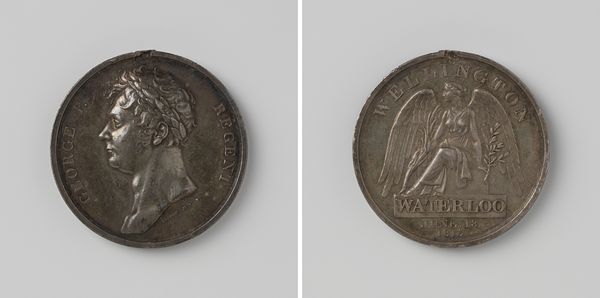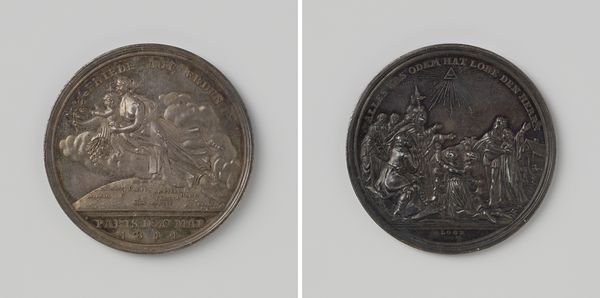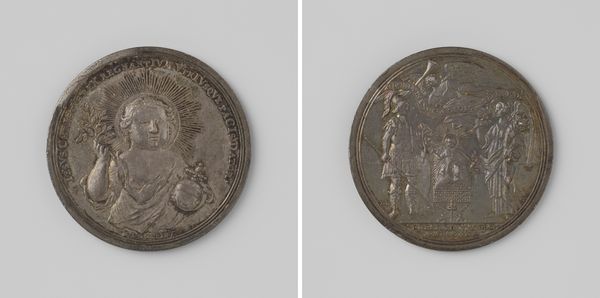
Dimensions: diameter 3.7 cm, weight 19.25 gr
Copyright: Rijks Museum: Open Domain
Editor: This is the ‘Vroedschapspenning van de stad 's-Gravenhage,’ likely from 1786, and the piece is metal – it appears to be an engraved relief. The symmetry of the coin is compelling, yet the symbolism is opaque at first glance. How do you interpret the arrangement and formal qualities of the images on each side? Curator: The work exemplifies Neoclassical ideals through its rigid symmetry and balanced composition, reflecting the Enlightenment's emphasis on order and reason. Note the heraldic side. The prominent crown indicates sovereignty, and the two lions flanking the coat of arms contribute to a powerful sense of state authority, wouldn’t you agree? Editor: Absolutely. And the reverse, with Concordia holding hands with a figure holding scales… It speaks to balance as well. The inscription "CONCORDIA" is positioned on the upper perimeter of the design which reinforces unity, but the stark presentation and engraving contribute to an objective quality of the metal surface, what do you think? Curator: I see that too. It removes individual subjectivity to underscore ideals, focusing instead on objective moral and social orders. In scrutinizing this composition, it prompts us to ponder if those with literal and figurative power really aimed to create fair agreements amongst its citizenry. This makes me question whose notion of balance the scales represent. It is this interplay of symmetry and suggested meaning that creates a sustained visual appeal. Editor: That's fascinating. I hadn't considered the potential tension between the ideals presented and the actual exercise of power. The formal elements almost mask the socio-political commentary. Thank you! Curator: A very good question. In short, the piece's objective representation is less about inherent beauty and more about projecting ideal government systems as one hopes it can or should function. A point well taken!
Comments
No comments
Be the first to comment and join the conversation on the ultimate creative platform.
